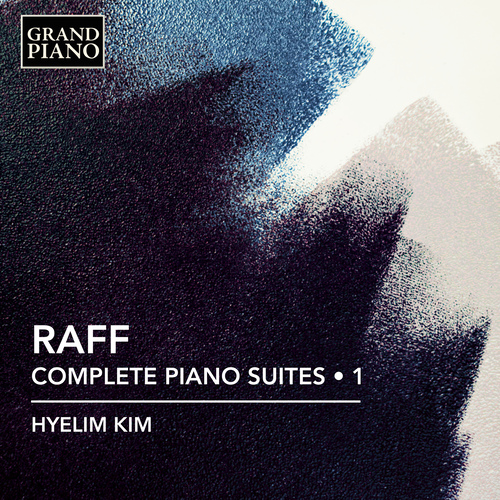
About this Release
Catalogue No.: GP957
Release Date: October 2025
Barcode: 747313995714
Composer(s): Joachim Raff
Artist(s): Hyelim Kim
Link(s):
RAFF, JOACHIM (1822–1882)
Complete Piano Suites • 1
- Hyelim Kim, piano
Joachim Raff was a largely self-taught composer whose style stands somewhere between the German traditionalism of Schumann and the newer school of Wagner. Raff composed seven Suites for Piano, a form he preferred to the sonata, and this provided him with greater freedom as a composer, resulting in his most substantial contribution to the piano literature. This is reflected in the Mendelssohn-like lyricism of the First Suite; contrasts between Baroque and Romantic styles in the Third Suite, a piece admired by Liszt; and more nationalist inclinations in the memorably melodic Fifth Suite.
Tracklist
|
Piano Suite No. 1 in A Minor, Op. 69 (1857) (00:11:30 )
|
|
1
I. Preludio (00:01:58)
|
|
2
II. Mazurka (00:02:31)
|
|
3
III. Toccatina (00:01:23)
|
|
4
IV. Aria (00:03:24)
|
|
5
V. Fuga (00:01:50)
|
|
Piano Suite No. 3 in E Minor, Op. 72 (1857) (00:15:30 )
|
|
6
I. Preludio (00:02:30)
|
|
7
II. Minuetto (00:02:38)
|
|
8
III. Toccata (00:02:03)
|
|
9
IV. Romanza (00:04:17)
|
|
10
V. Fuga (00:03:51)
|
|
Piano Suite No. 5 in G Minor, Op. 162 (1870) (00:31:30 )
|
|
11
I. Elegie in Sonatenform (Elegy in Sonata Form) (00:08:40)
|
|
12
II. Volkslied mit Variationen (Folksong with Variations) (00:12:46)
|
|
13
III. Ländler (00:04:43)
|
|
14
IV. Märchen (Fairy Tale) (00:05:01)
|
Total Time: 00:57:35
The Artist(s)
 Hyelim Kim is a prizewinner of major international piano competitions, including the Clara Haskil (Vevey) and Arcangelo Speranza (Taranto) International Piano Competitions, Hastings International Piano Concerto Competition, Les Étoiles du Piano (Roubaix), and the Annarosa Taddei International Competition (Rome). She made her orchestral debut at the age of ten with the Filarmonica ‘Mihail Jora’ Bacău and has since appeared with the Royal Philharmonic Orchestra, Southbank Sinfonia, Zermatt Festival Orchestra, Orchestre de Picardie, Gürzenich Orchester Köln and Orchestre Philharmonique du Maroc, among others. Kim has performed in Korea and across Europe at venues such as the Elbphilharmonie Hamburg, Tonhalle Düsseldorf, Kölner Philharmonie, Flagey Brussels and TivoliVredenburg Utrecht. She has been invited to perform at festivals including Piano Folies du Touquet, Festival de Saint-Riquier and Musica Nigella. Born in South Korea, she began learning the piano at the age of five and moved to Germany at seventeen to study with Georg Friedrich Schenck. Kim holds a Bachelor’s degree from the Robert Schumann Hochschule Düsseldorf and a Master’s degree from the Hochschule für Musik und Tanz Köln, where she is continuing her Konzertexamen with Claudio Martínez-Mehner and Nina Tichman. In 2023, she received a scholarship from Fondation Clavarte in Bern.
Hyelim Kim is a prizewinner of major international piano competitions, including the Clara Haskil (Vevey) and Arcangelo Speranza (Taranto) International Piano Competitions, Hastings International Piano Concerto Competition, Les Étoiles du Piano (Roubaix), and the Annarosa Taddei International Competition (Rome). She made her orchestral debut at the age of ten with the Filarmonica ‘Mihail Jora’ Bacău and has since appeared with the Royal Philharmonic Orchestra, Southbank Sinfonia, Zermatt Festival Orchestra, Orchestre de Picardie, Gürzenich Orchester Köln and Orchestre Philharmonique du Maroc, among others. Kim has performed in Korea and across Europe at venues such as the Elbphilharmonie Hamburg, Tonhalle Düsseldorf, Kölner Philharmonie, Flagey Brussels and TivoliVredenburg Utrecht. She has been invited to perform at festivals including Piano Folies du Touquet, Festival de Saint-Riquier and Musica Nigella. Born in South Korea, she began learning the piano at the age of five and moved to Germany at seventeen to study with Georg Friedrich Schenck. Kim holds a Bachelor’s degree from the Robert Schumann Hochschule Düsseldorf and a Master’s degree from the Hochschule für Musik und Tanz Köln, where she is continuing her Konzertexamen with Claudio Martínez-Mehner and Nina Tichman. In 2023, she received a scholarship from Fondation Clavarte in Bern. The Composer(s)
 The reputation of Joseph Joachim Raff was once so high that during the 1860s and 1870s he was regarded by many as the foremost symphonist of his day. His breakthrough came in 1863 when both his First Symphony and a cantata won major prizes. From then on his reputation rose inexorably until in 1877 he became the founding director of the prestigious Hoch Conservatory in Frankfurt. Although primarily known, then as now, as a symphonist, Raff was prolific in most genres; operas, choral works, chamber music and songs abound in his catalogue but by far his largest output was for the piano: there are over 130 works for the instrument, many of them with multiple movements or numbers.
The reputation of Joseph Joachim Raff was once so high that during the 1860s and 1870s he was regarded by many as the foremost symphonist of his day. His breakthrough came in 1863 when both his First Symphony and a cantata won major prizes. From then on his reputation rose inexorably until in 1877 he became the founding director of the prestigious Hoch Conservatory in Frankfurt. Although primarily known, then as now, as a symphonist, Raff was prolific in most genres; operas, choral works, chamber music and songs abound in his catalogue but by far his largest output was for the piano: there are over 130 works for the instrument, many of them with multiple movements or numbers. 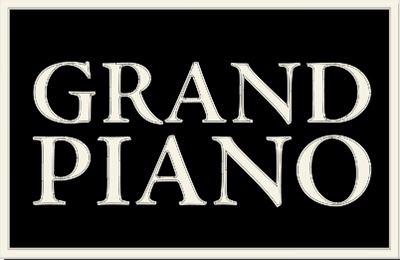
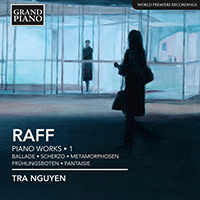
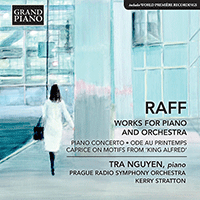
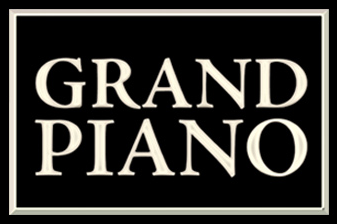 Grand Piano has gained a reputation for producing high quality recordings of rare keyboard gems. Dedicated to the exploration of undiscovered piano repertoire, the label specialises in complete cycles of piano works by many lesser-known composers, whose output might otherwise have remained unknown and unrecorded.
Grand Piano has gained a reputation for producing high quality recordings of rare keyboard gems. Dedicated to the exploration of undiscovered piano repertoire, the label specialises in complete cycles of piano works by many lesser-known composers, whose output might otherwise have remained unknown and unrecorded.






